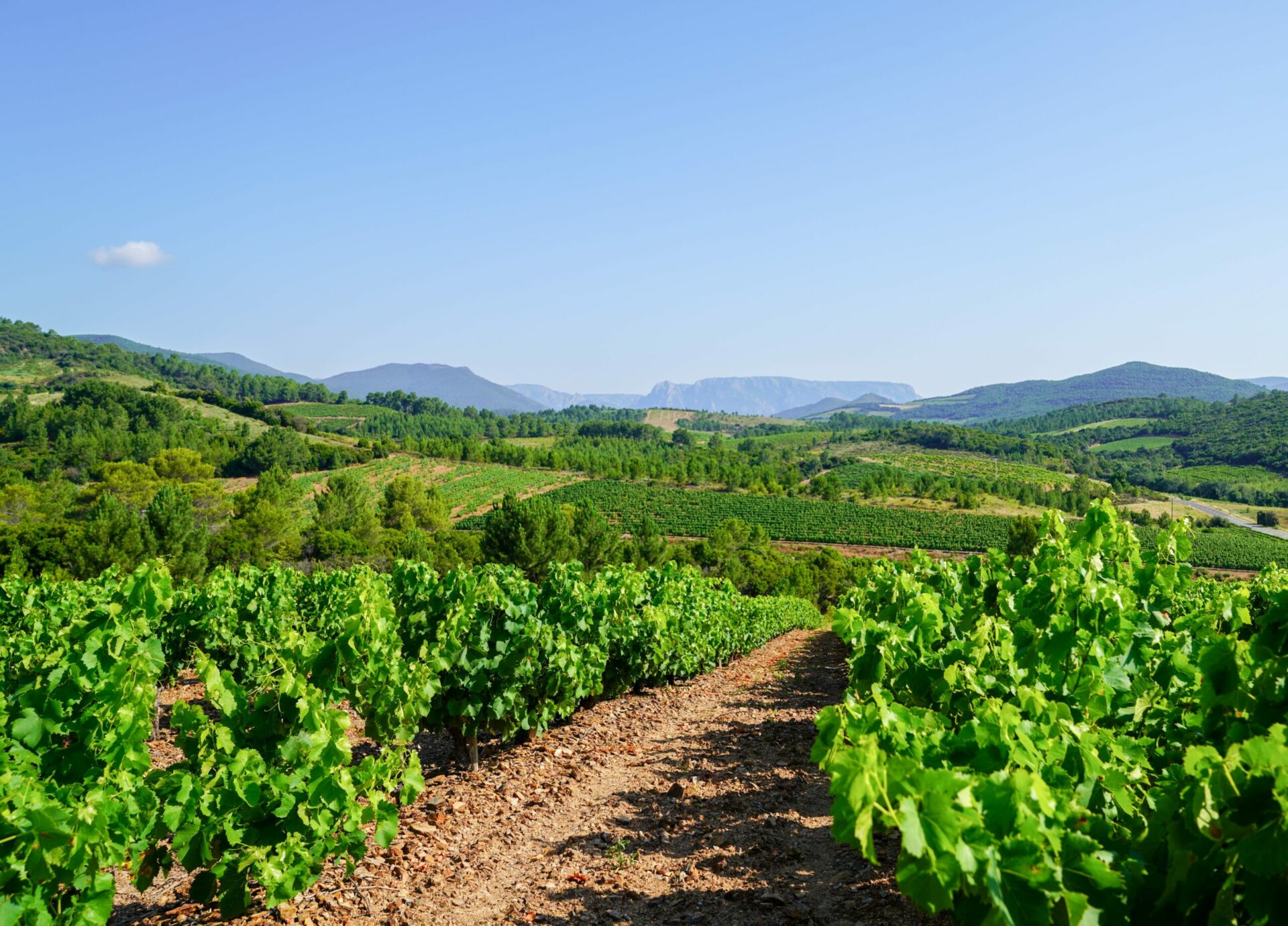AOP Saint-Chinian Berlou
the tiny Languedoc gem


This boutique-scale appellation
embodies the schist side of the vineyards of Saint-Chinian. Its pristine landscapes, breathtaking vistas and wines full of authentic charm are an absolute delight to behold.

Saint-Chinian-Berlou and its geography
Saint-Chinian is a wine region with extremely varied geology, the ultimate playground for scientists keen to rack their brains as to why the vineyard sites are so incredibly complex. This is not the place to go into intricate detail over this jigsaw with countless pieces.
Suffice it to say that Saint-Chinian’s vines are rooted in limestone in the south-eastern part, and in schist in the north-west where the AOP Saint-Chinian-Roquebrun and AOP Saint-Chinian-Berlou have been hived off. The focus here is on the latter of the two.

Foundation
2005
Territory
5
villages
Production
31 HA
Producers
4 independent wineries,
1 co-operative.
Colours
Red
100%


Main grape varieties
authorized for the reds
syrah
grenache
mourvèdre
carignan
lledoner pelut
plus d'infos :
www.saint-chinian.comterroir


With not a town in sight and the sea some distance away, this must surely be one of the best preserved parts of the region. In winter, icy winds sometimes nip the fingertips of the winegrowers as they prune their vines. In summer, the heat and sun can be stifling. One co-operative winery and a clutch of estates bottling their own wines continue to champion the personality of this growth, which basks in a hot, dry Mediterranean climate.
The magnificent landscapes can feel harsh but the wines retain the typicity of schist soils. While their southern characters are still discernable, they reveal a charm that is more subtle than exuberant, and a compelling sincerity rather than show-stopping allure. Displaying a beautiful fresh stamp stemming primarily from their elevation – the vineyards can easily reach 400 metres above sea level – Saint-Chinian-Berlou wines, all of them red, offer instant gratification, resonating with the current zeitgeist.

History

Around the tiny village of Berlou, originally Berloup – or ‘spring of the wolves’ in Latin – the earliest evidence of vine growing allegedly dates back to Charlemagne. And vines are still very much a part of the landscape, clinging, come what may, to the steep inclines, to sites that are both stunning yet austere, verging on the distinctive contours of the Cevennes and Haut Languedoc.





